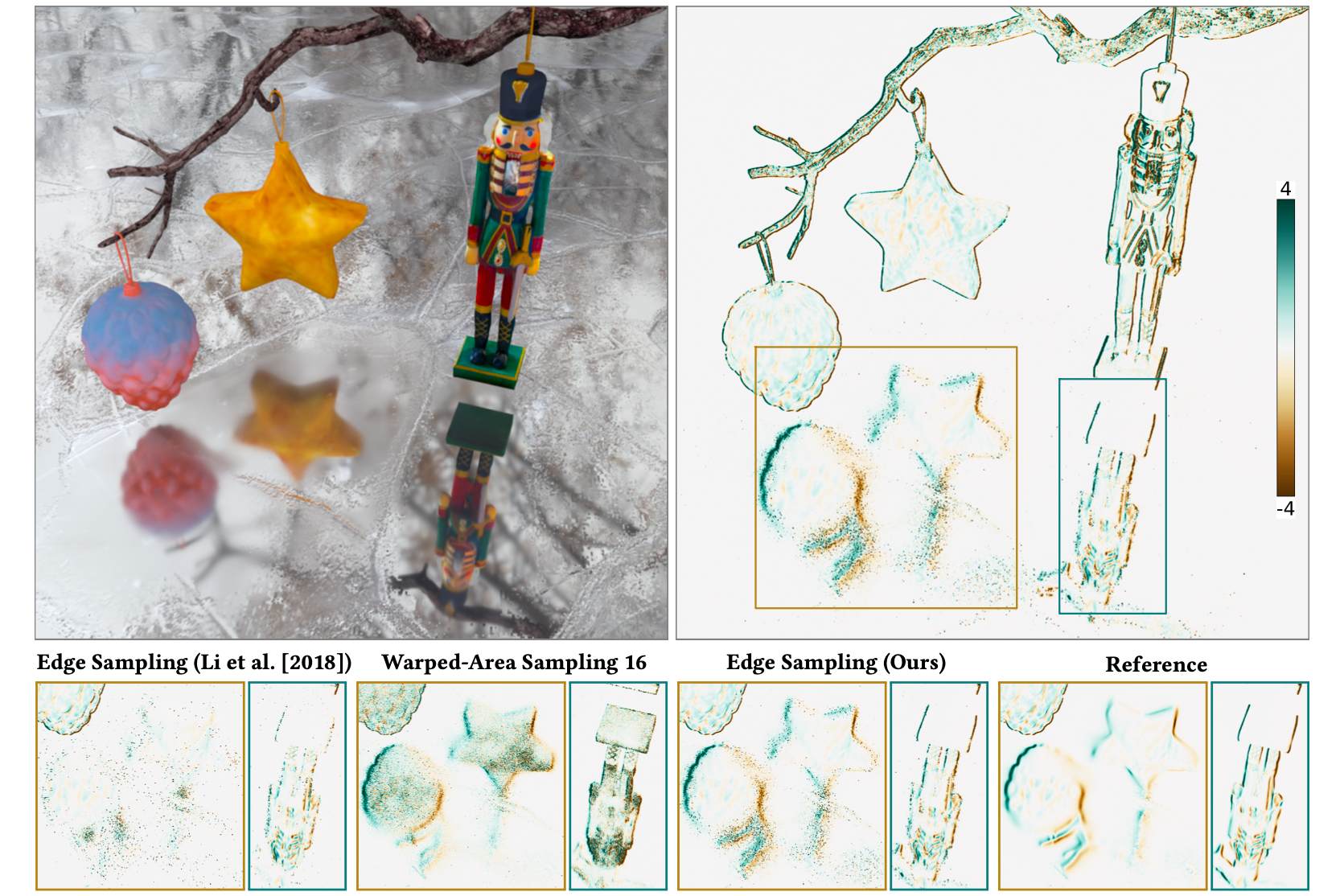
We render the derivative w.r.t. horizontal translation of several objects observed through glossy reflections. In an equal-time comparison, we achieve much lower variance than prior work on edge sampling [Li et al. 2018]. Warped-area sampling [Bangaru et al. 2020] exhibits bias on reflections of branches and noise across object areas.